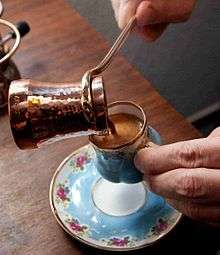Middle Eastern cuisine
While the Middle East is vast and diverse, similar culinary traditions can be found across the region. They have been formed by the Mediterranean climate, commercial routes to Europe, Asia and Africa, and the Abrahamic religions of Judaism, Islam and Christianity.
Understand
Much of North Africa, Central Asia and the Balkans have a similar cuisine, influenced by a common Turkish heritage from long-term Ottoman rule on the one hand (Balkans, Middle East, North Africa) and Turkic culture on the other (much of Central Asia).
Iranian food, with its common use in savory dishes of pomegranate molasses, cherries, plums, almond paste and various distinctive herbs and spices, has some commonalities with Levantine food but is in many ways quite a distinct cuisine, and different from the cuisines of the Indian Subcontinent as well.
Ingredients
.jpg)
- Meat: Beef, lamb and poultry are ubiquitous. They do not use pork, which is taboo in Islam and Judaism.
- Gyros, döner kebab and shawarma are essentially the same dish.
- Seafood: While non-fish seafood is taboo in Judaism, it is accepted by other religions. Domestic production is rather small, though, and fresh seafood is hard to come by.
- Chick peas are a common protein source, popular with vegetarians, and the base for dishes such as falafel and dips such as hummus.
- Rice is the staple of Iranian cuisine.
- Bread, especially flat wheat bread (naan in Persian, lavaş in Turkish), is ubiquitous.
- Couscous and bulgur are similar ingredients, based on wheat.
- Dates are usually offered to guests in homes and meetings, as a token of hospitality.
- Common spices are saffron, basil, sage, allspice, mint, and pepper.
Beverages

Coffee originated in Ethiopia, and reached the West through the Ottoman Empire. Together with tea, it is ubiquitous.
While alcoholic beverages are taboo in Islam, alcohol is available in more liberal Muslim cities and countries such as Abu Dhabi, Dubai and Turkey. Even in countries where alcohol is sold, binge-drinking and drunkenness are frowned on. Judaism and (most varieties of) Christianity are fine with alcohol, however, and even in some majority Muslim countries, alcohol production and consumption by and for minorities is tolerated.
Israel, Lebanon and the Caucasus have a tradition of wine-making dating back to ancient times.
The restrictions on alcohol and the warm climate make soft drinks and juices popular. A halal restaurant in the Middle East can have a juice list as extensive as a European restaurant's wine list.